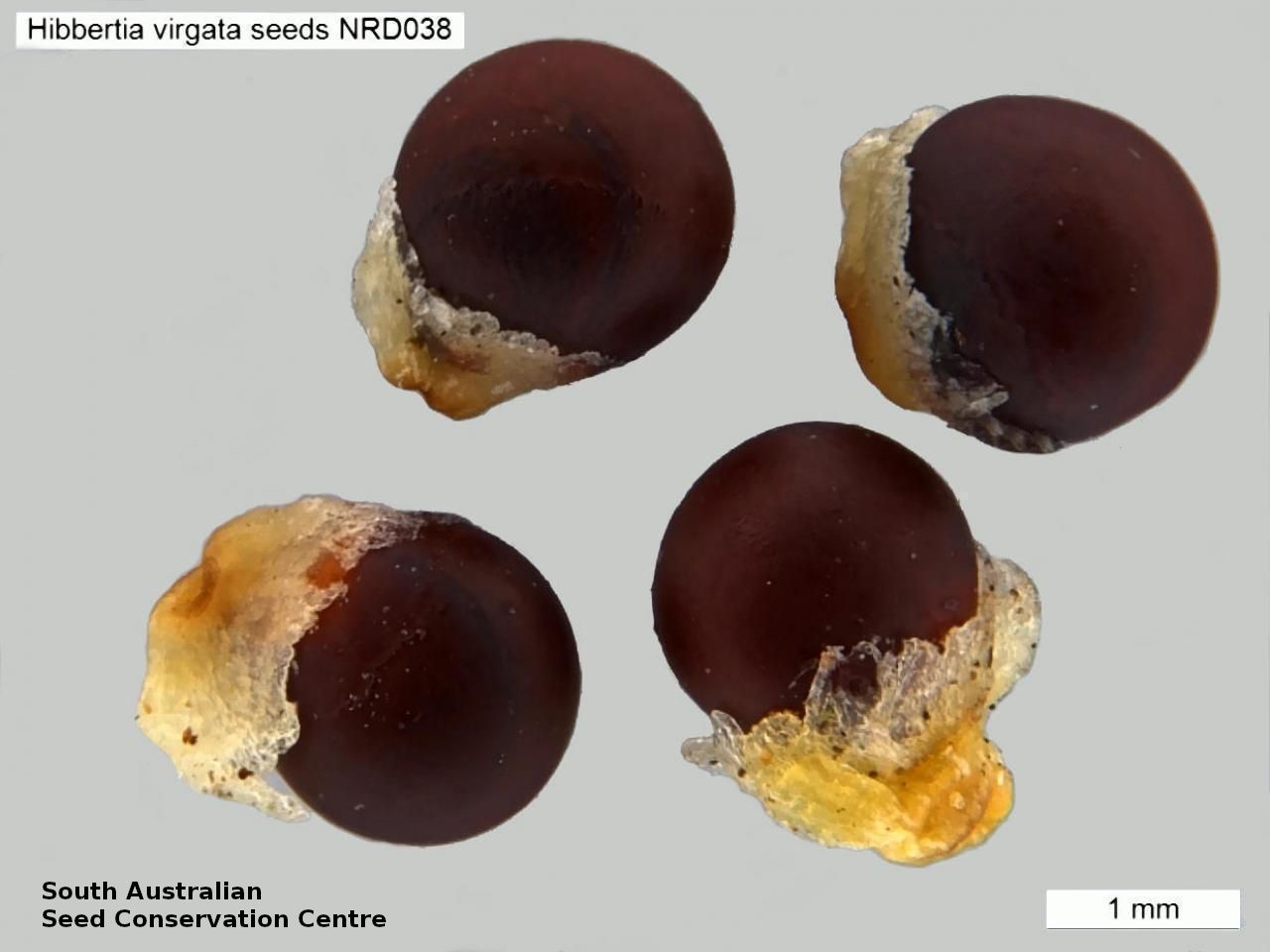Twiggy Guinea-flower
Display all 16 images
















Regional Species Conservation Assessments per IBRA subregion.


Least concern
Near threatened
Rare
Vulnerable
Endangered
Critically endangered
Extinct
Data deficient
Adelaide
Arkaroola
Ceduna
Coober Pedy
Hawker
Innamincka
Marla
Marree
Mount Gambier
Oodnadatta
Renmark
Wudinna
Keith
Yunta
Display IBRA region text
| Bridgewater (NCP01) | Naracoorte Coastal Plain | Rare (IUCN: RA d(i,ii)) [edge of range] |
| Lucindale (NCP03) | | Least Concern [sandy soils] |
| Tintinara (NCP04) | | Least Concern [sandy soils] |
| Kangaroo Island (KAN01) | Kanmantoo | Least Concern |
| Fleurieu (KAN02) | | Near Threatened [some taxonomic issues - has been split; likes sandy soils; weeds a threat] |
| Mount Lofty Ranges (FLB01) | Flinders Lofty Block | Near Threatened [some taxonomic issues - has been split; likes sandy soils; weeds a threat] |
| Broughton (FLB02) | | Rare (IUCN: RA d(i,ii)) (Probable Decline) |
| Southern Yorke (EYB01) | Eyre Yorke Block | Least Concern [Sandy areas] |
| St Vincent (EYB02) | | Vulnerable (IUCN: VU B2ab(i,ii,iii)) (Definite Decline) |
| Eyre Hills (EYB03) | | Least Concern [to be named H. conduplicata] |
| Talia (EYB04) | | Least Concern [to be named H. conduplicata] |
| Eyre Mallee (EYB05) | | Least Concern [to be named H. conduplicata] |
| South Olary Plain (MDD01) | Murray Darling Depression | Rare (IUCN: RA d(ii)) |
| Murray Mallee (MDD02) | | Least Concern |
| Murray Lakes and Coorong (MDD03) | | Least Concern [sandy soils] |
| Lowan Mallee (MDD04) | | Least Concern |
| Wimmera (MDD05) | | Rare (IUCN: RA d(i,ii)) [edge of range; lack of habitat] |
| Murray Scroll Belt (RIV06) | Riverina | Vulnerable (IUCN: VU B2ab(i,ii,iii)) (Probable Decline) |
| Myall Plains (GAW01) | Gawler | Rare (IUCN: RA d(ii)) [to be named H. conduplicata. Edge of range] |
| Gawler Volcanics (GAW02) | | Rare (IUCN: RA d(ii)) [to be named H. conduplicata. Edge of range] |
| Yellabinna (GVD06) | Great Victoria Desert | Rare (IUCN: RA d(ii)) [to be named H. conduplicata. Edge of range] |
| Yalata (NUL03) | Nullarbor | Rare (IUCN: RA d(ii)) [to be named H. conduplicata. Edge of range] |
| 3 of 4 subregions | Naracoorte Coastal Plain | Least Concern , Rare |
| 2 of 2 subregions | Kanmantoo | Least Concern , Near Threatened |
| 2 of 6 subregions | Flinders Lofty Block | Near Threatened , Rare |
| 5 of 5 subregions | Eyre Yorke Block | Least Concern , Vulnerable |
| 5 of 6 subregions | Murray Darling Depression | Least Concern , Rare |
| Murray Scroll Belt (RIV06) | Riverina | Vulnerable (IUCN: VU B2ab(i,ii,iii)) (Probable Decline) |
| 2 of 8 subregions | Gawler | Rare |
| Yellabinna (GVD06) | Great Victoria Desert | Rare (IUCN: RA d(ii)) [to be named H. conduplicata. Edge of range] |
| Yalata (NUL03) | Nullarbor | Rare (IUCN: RA d(ii)) [to be named H. conduplicata. Edge of range] |
Botanical art
Kath Alcock paintings: 11
Prior names
Hibbertia virgata var. incana
Hibbertia virgata var. crassifolia
Hibbertia glandulosa
Hibbertia fasciculata var. crassifolia
Etymology
Hibbertia, named after George Hibbert (1757-1837), a London merchant who maintained a private botanic garden at Chelsea. Virgata, from the Latin 'virga,' meaning twiggy, referring to its twiggy habit.
Distribution and status
Found in the southern part of South Australia, growing on sandy soils in open woodlands and heaths in coastal and inland areas. Also found in New South Wales, Victoria and Tasmania. Native. Common in South Australia. Uncommon in New South Wales and Tasmania. Common in Victoria.
Herbarium regions: Eyre Peninsula, Northern Lofty, Murray, Yorke Peninsula, Southern Lofty, Kangaroo Island, South Eastern, Green Adelaide
NRM regions: Adelaide and Mount Lofty Ranges, Eyre Peninsula, Kangaroo Island, Northern and Yorke, South Australian Murray-Darling Basin, South East
AVH map: SA distribution map (external link)
Plant description
Small erect shrub to 150 cm high. Leaves linear-oblanceolate to linear, to 30 mm long and 2 mm wide; glabrous or covered by curly hairs. Flowers yellow to 8 mm long, axillary or terminal on short shoots. Flowering between July and September. Fruits are brown ellipsoid capsule with 3 carpels and 2 ovules in each; glabrous. Seeds are brown, globular seed to 2 mm diameter.
Seed collection and propagation
Collect seeds between October and January. Collect mature capsules, those that are turning a pale straw-colour and contain brown seeds. Place the capsules in a tray and leave to dry for one to two weeks. Then rub the capsules gently by hand to dislodge the seeds. Use a sieve to separate the unwanted material. Store the seeds with a desiccant such as dried silica beads or dry rice, in an air tight container in a cool and dry place. This genus tend to have low seed viability. This species has morpho-physiological dormancy and can be difficult to germinate.
Germination table:
Display














